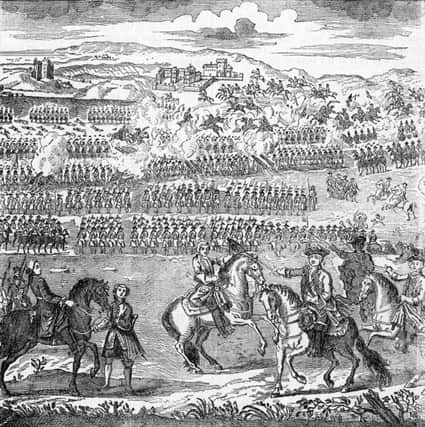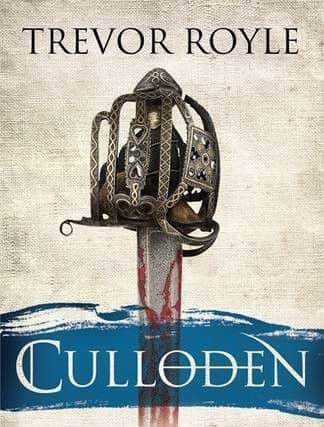Battle of Culloden: What happened once the fighting stopped?


Culloden by Trevor Royle | Little, Brown, 409pp, £25
The story of Culloden, the last battle fought in Scotland, has been told many times, and there is little new to add. Trevor Royle’s account is clear, professional and authoritative, as it to be expected from Scotland’s finest military historian. From the Jacobite point of view it was a battle fought at the wrong time on the wrong ground, and then mismanaged; from the Hanoverian, a victory obtained by superior numbers and well-drilled troops. The immediate consequences for Highland society are also well-known and well-described. Royle indeed deals even-handedly with the whole story of the Rising. He is fair to both Charles Edward and Cumberland, the one a high-spirited leader, the other an efficient organiser, whose reputation as the “Butcher” obscures the enthusiasm with which his victory at Culloden was greeted by the vast majority in Presbyterian Lowland Scotland.
Royle deals judiciously with the vexed question of the decision to retreat from Derby. He concedes that if the Jacobites had marched on London, as the Prince alone wished, they might well have defeated the scratch forces defending the capital. However in the absence of the promised French invasion and of any rising by English Jacobites, they would surely have been unable to withstand the attack from Cumberland’s well-trained army when it advanced on London. So Lord George Murray and the other members of the Prince’s council were probably right to demand that they withdrew to Scotland. Nevertheless it was a decision which doomed the Rising to failure.


Advertisement
Hide AdThe treatment of Culloden is unusual in that Royle gives at least as much attention to the Hanoverian army (which of course included Scottish regiments) as he does to the Jacobites. This leads him naturally to the second and more original part of the book, expressed in its sub-title, “Scotland’s Last Battle And The Forging Of The British Empire”. The failure of the Rising completed the Union; the defeat of the Stuarts really was the end of an old song. Scots no longer looked back, except sentimentally, to the old dynasty and the independent kingdom. Instead they took a leading role in the expansion of Empire and in the development of a fully professional army, a role in which many members of old Jacobite families were happy to play their part.
The ’45 came in the middle of the first European War (1742-8) in which Britain had been engaged for 30 years. This would soon be followed by the Seven Years War (1756-63), fought not only in the Netherlands and Germany, but also in North America and India. Some two-thirds of Royle’s book deals with the decades after Culloden and much of this will be new to readers familiar with the story of the Rising. He makes the point that many of the officers and commanders who served in these later wars owed their promotion to Cumberland’s patronage, and that the success of British arms at the Battle of Minden, where the regiment that became the King’s Own Scottish Borderers distinguished itself, and in North America especially derived from the lessons learned in 1745-6. Chief among these was the understanding of “the value of disciplined volley fire” from muskets, and the use of “regular infantrymen to ‘pacify’ the civilian population” and, in North America, the native tribes. “The use of the army,” he concludes, “as an instrument of state policy came to represent an acceptable way of fighting frontier wars against the French and their native American auxiliaries along the Ohio, Missouri and St Laurence rivers”. The high point of the campaign in North America was the capture of Quebec by General Wolfe who had himself fought at Culloden. That victory extinguished the French Empire in North America and made Canada British.
Even someone tolerably well acquainted with 18th century history is likely to find much that is new as Royle traces the careers, for the most part distinguished, of Army commanders who first served under Cumberland either at Culloden or, previously, in Flanders; they contributed greatly to the growth of Empire. Many in Scotland now take a dim view of the British Empire, and doubtless there was much that we now regard as reprehensible. Nevertheless the making of the Empire was a great achievement and one in which Scots were disproportionately prominent. Culloden cemented the Union and the Union made the Empire what it was. This was the positive outcome and significance of the battle. Royle tells the story splendidly and makes his argument cogently. His book deserves a wide readership.